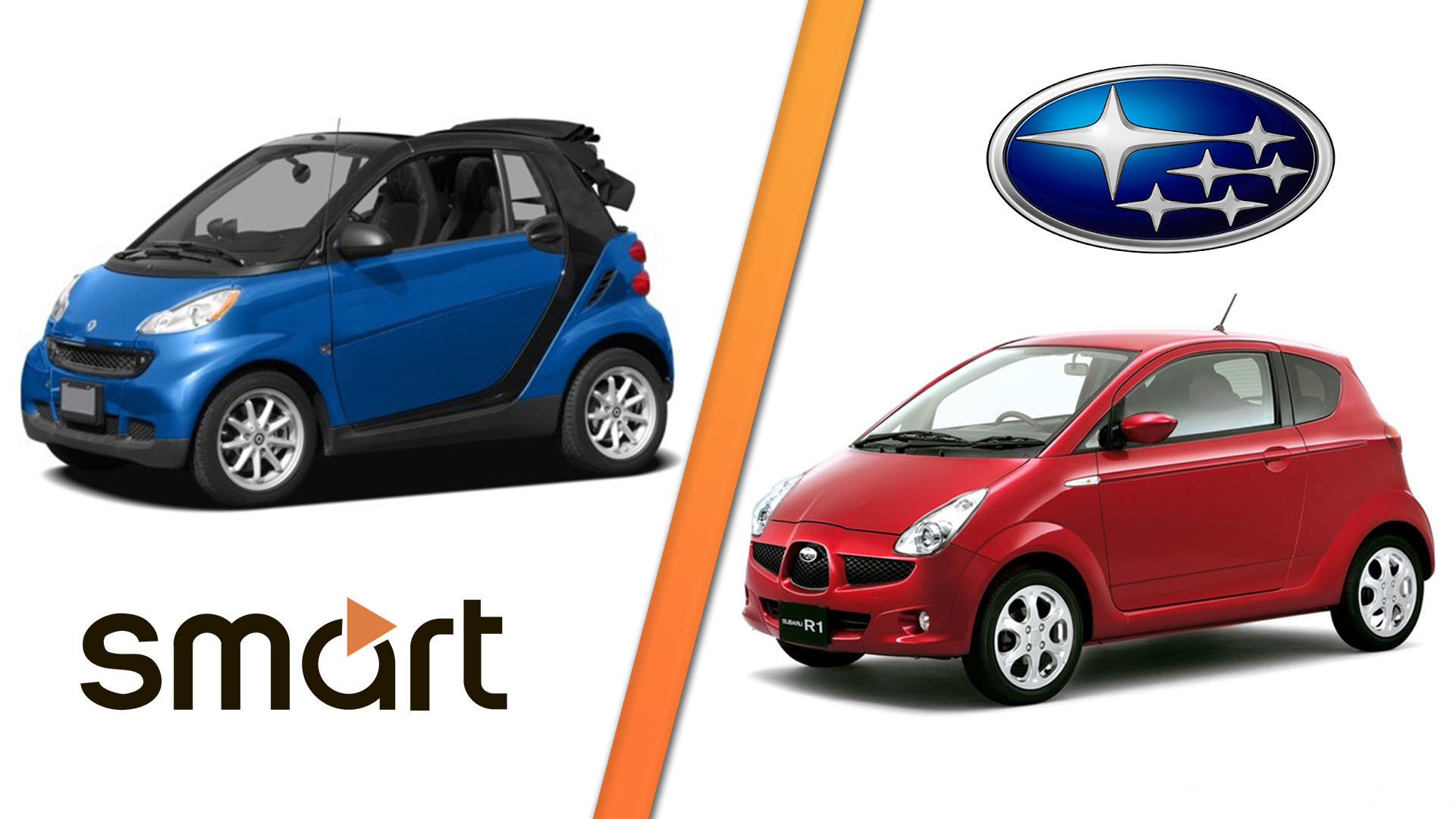

Ask the average American to think of the smallest vehicle they know and the answer will probably be Smart, pretty much the only microcar to make a measurable impact on our collective psyche this century. Not a lasting one, of course. But there was a brief time in the mid-to-late-aughts when buzz around the Smart ForTwo (and rising gas prices) prompted automakers to ponder their own mini transport projects. Some, like Subaru, went further than others.
A secret until now, Subaru took a serious look at selling two of its tiny Japanese-market kei cars in America to compete with Smart in the mid-2000’s, covertly importing the models from Japan to its New Jersey headquarters for a full evaluation. You may have noticed a distinct lack of minuscule Subarus on American roads; obviously, it didn’t pan out. But the details provided by a former consultant on the project and confirmed by the automaker show how close we came to that alternate reality.

At the time, the price of gasoline in the United States was climbing past three dollars a gallon as pre-crash economic headwinds built, and almost nothing in Subaru’s all-wheel-drive fleet could crack 30 mpg. With hybrid technology still developing and pure EV propulsion a distant dream, executives watching excitement build around the tiny Smart’s impending arrival in America figured they might as well take a look at their existing stable of JDM kei cars.

Kei cars are a Japanese phenomenon, a defined class of tiny vehicles born from the same postwar constraints responsible for European microcars like the Isetta. They endure in Japan thanks to its extreme space constraints and good old tax incentives. Regulations limit engines to 660cc and 64 horsepower, along with maximum physical dimensions of 11.2 feet in length and 4.85 feet in width. By comparison, the first Smart ForTwo was a little over 8 feet long and about 5 feet wide.
While Smart has its roots in the 1980s, Subaru’s been making kei cars for its entire existence—in fact, the first car it sold in America in 1968, the sorry Subaru 360, was a kei car. Unfortunately it was also terrible and dangerous, but things have advanced over the last half century, and Subaru knew it could beat Smart one-on-one in America given the chance. So sometime in the mid-2000’s—the exact timing is unclear—the decision was made to ship two microcars to the U.S. and work them over in secret at their facility in New Jersey.
A couple of hatchbacks, the two-door Subaru R1 and four-door Subaru R2, were chosen for the experimental mission. Both seemed like decent candidates with their American-friendly CVTs instead of a manual transmission and the company’s 64-horsepower EN07 four-cylinder engine.

Insight into this hushed plan comes courtesy of Ken Root, a former General Motors designer and Subaru consultant who was involved with the project in 2007. He says Subaru also wanted to get its hands on a Smart car—not yet on sale in the U.S.—and went north of the border to buy one in Canada. During testing, engineers considered the R1 and R2 to be much more refined than the Smart. Root describes the early Smart as a “lawnmower” and claims others involved felt the same way.
But even though the Kei cars were objectively better, size still mattered. That 4.85-foot width regulation meant the Smart was always going to be more spacious inside. Different seating arrangements were considered to solve the issue, but designers ended up running into problems with safety, ingress and egress. “We found out that us fat-assed Americans couldn’t fit four people [in the R2],” Root says.
We reached out to Subaru, who confirmed both the secret imports and the plan to hit Smart, filling out the details in slightly more diplomatic terms. Turns out road safety on our wide open American highways was also an issue. “We were studying [the R1 and R2] for the U.S. market since there were concerns about rising fuel prices. They would have been Smart Car competitors,” a spokesperson said. “Ultimately these cars could not support our brand safety strategy in the U.S. Fun to drive, definitely turned heads, but not a fit for our brand in the U.S. at the time.”

Of course, the automaker also wanted to see how well Smart actually sold. The 25,000 ForTwos Americans bought in 2008 likely had some at Subaru kicking themselves. Smart’s sad exit from the U.S. market this year shows caution was warranted. Though we missed out on a future where kei cars came to America en masse, Root claims the R1 and R2 Subaru brought over for testing are still in New Jersey; that’s the one thing Subaru couldn’t—or wouldn’t—confirm.
“They didn’t want to export them,” Root says. “I’m pretty sure they’re just sitting over there.”